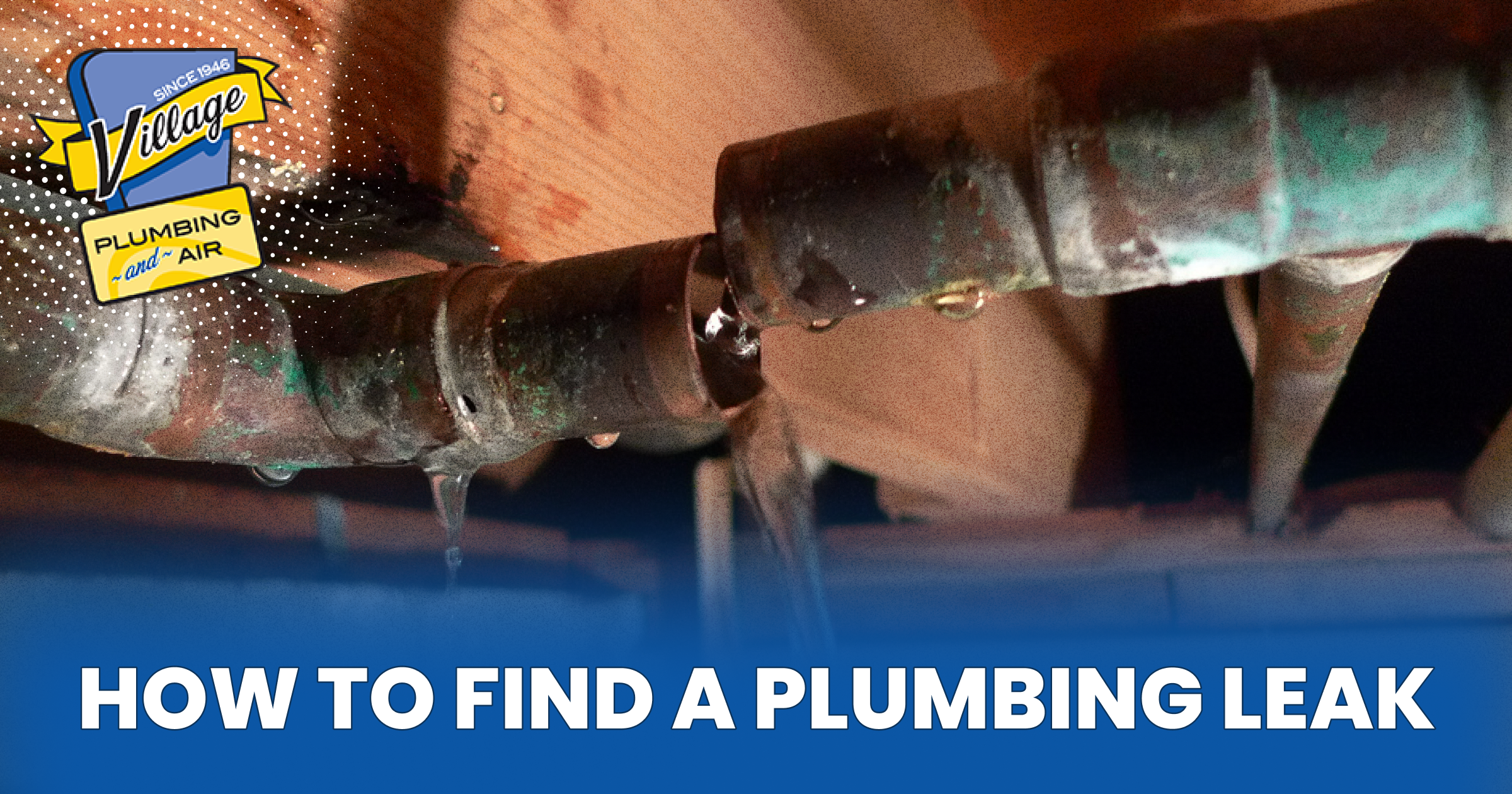Water, when it’s not contained in piping or a tub, sink, or appliance, can quickly do major damage to your furnishings and the structure of your home. The unfortunate reality is that many plumbing leaks aren’t easy to find. While our plumbers can use leak detection technologies to identify the source of a problem, you can estimate the location of a leak without hi-tech tools. Or, you can at least determine if there’s a potential leak to call a plumber for.
These are some ways you can look for a plumbing leak in your home:
- Track the Water Bill: Your water bill shouldn’t change much from month to month. If it suddenly jumps up, excess water usage may be due to a leak. A household with a family of four uses about 12,000 gallons per month during colder months; if it exceeds this, there could be a potential leak. It’s a good idea to act quickly as the average leak wastes about 10,000 gallons of water per year.1
- Monitor Your Water Meter: The water meter is typically located on the side or back of the house at the water supply line entry point, or under a manhole-like cover near the street. To determine if there’s a leak, turn off all faucets and water-using appliances. Then check the water meter and take note of the reading; wait an hour and, if the numbers have changed, there’s a leak.
- Determine If the Leak Is Outdoors/Indoors: If your water meter is located by the street, turn off your home’s shut-off valve, which is in the basement or utility room where the main water pipe enters your home. Check the meter once and then an hour later. If the numbers don’t change the leak is inside; if there is a difference, the leak is from the water line leading to the house.
Look for Clues Outside
Outdoor leaks are often underground and therefore hard to find. Patches of greener, faster-growing grass or puddles on the surface are telltale signs of a water leak. In-ground irrigation systems can develop leaks due to frost or freeze damage. A break of just a fraction of an inch can waste thousands of gallons per month. It’s therefore crucial to call a professional, even if a garden hose or spigot is leaking.
Check for Clues Inside
When signs point to an indoor leak, start by checking under sink cabinets in the kitchen, bathroom, or laundry room. It should be dry inside these cabinets. The bases of toilets, showers, and tubs should be dry. If you find puddles under them, or beneath the clothes washer, dishwasher, or water heater, turn off the water supply valve to that location and call a plumber.
Toilets leaks often originate from a brittle flapper, which is a rubber stopper that prevents water from flowing to the bowl until it is flushed. If it’s damaged, water can trickle into the bowl. You can check for leakage by adding drops of food coloring to the tank. The color will appear in the bowl within five minutes if it is leaking.
However, many indoor plumbing leaks come from pipes and fittings located within walls, where you can’t see them. Clues to a problem can include:
- Water-Stained Walls/Ceilings: Usually yellowish or brownish, water stains on walls and ceilings can mean water is leaking from pipes and soaking through the drywall.
- Damaged Paint/Wallpaper: Wet wallboards can make it hard for paint or wallpaper to adhere to the surface. The wallboard itself can bulge as well.
- Musty Odors: A persistent leak provides a moist environment for mold to grow. While you may see black splotches on the outside of the wall, mold often grows inside where it can’t be seen, but often smelled.
- Damp Patches on the Floor: Water leaks can occur under concrete floors and slabs. Signs include damp patches with no visible ceiling leaks, moldy smells, or cracks or uneven surfaces in the concrete.
- Dripping Noises: If water moves along a wall stud, there may be no sound. But sometimes leaks can be heard as dripping despite no faucet or fixture being turned on.
Install a Leak Detector
If you have a leak-prone pipe, fixture, or older water heater, you can install a leak detection system. This is also wise for pipes leading to exterior faucets in cold climates. The unit will sound an alarm if the slightest amount of water is detected, prompting you to turn off the water supply and contact a plumber to fix the problem.
Request Service by a Skilled Houston Plumbing Company
Village Plumbing provides 24-hour emergency service. If you see or suspect a water leak in your home, we will quickly find the source and repair it. Request service online or call us at 713-526-1491 and we’ll send trained, licensed technicians to your home day or night, on the weekend, or a holiday.
Source:
